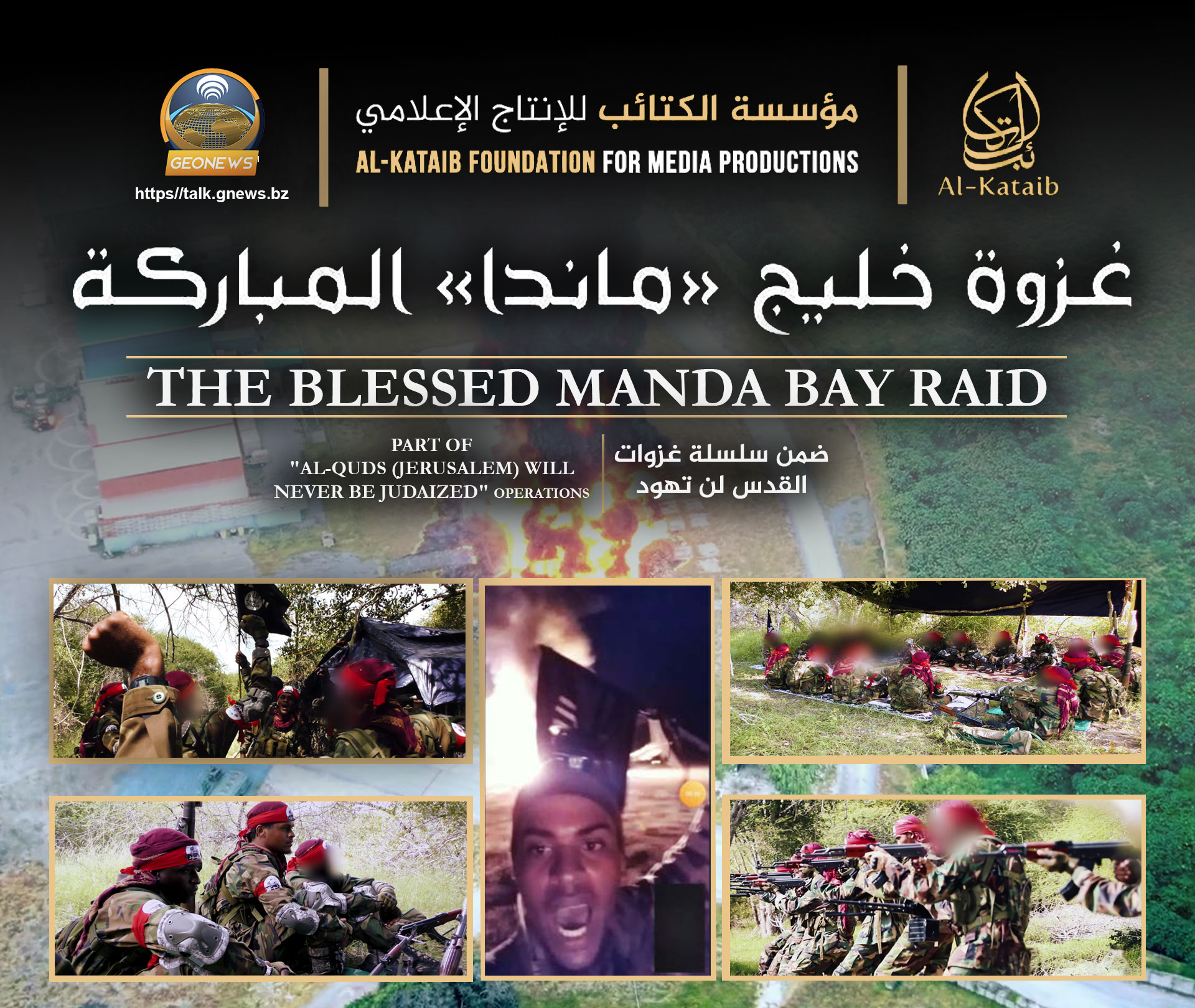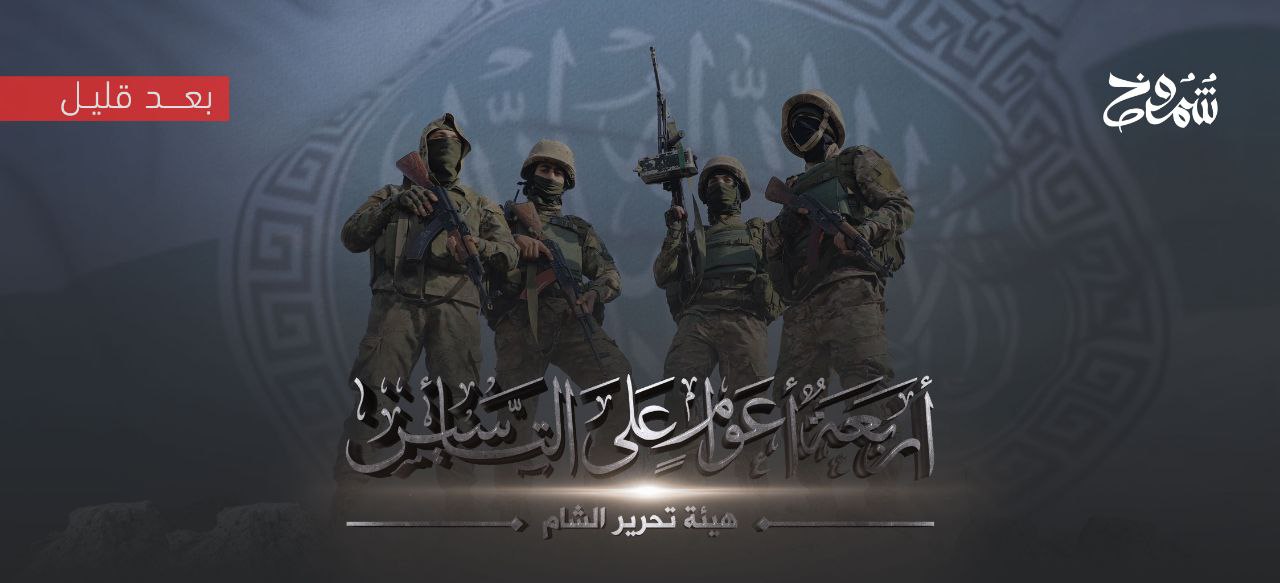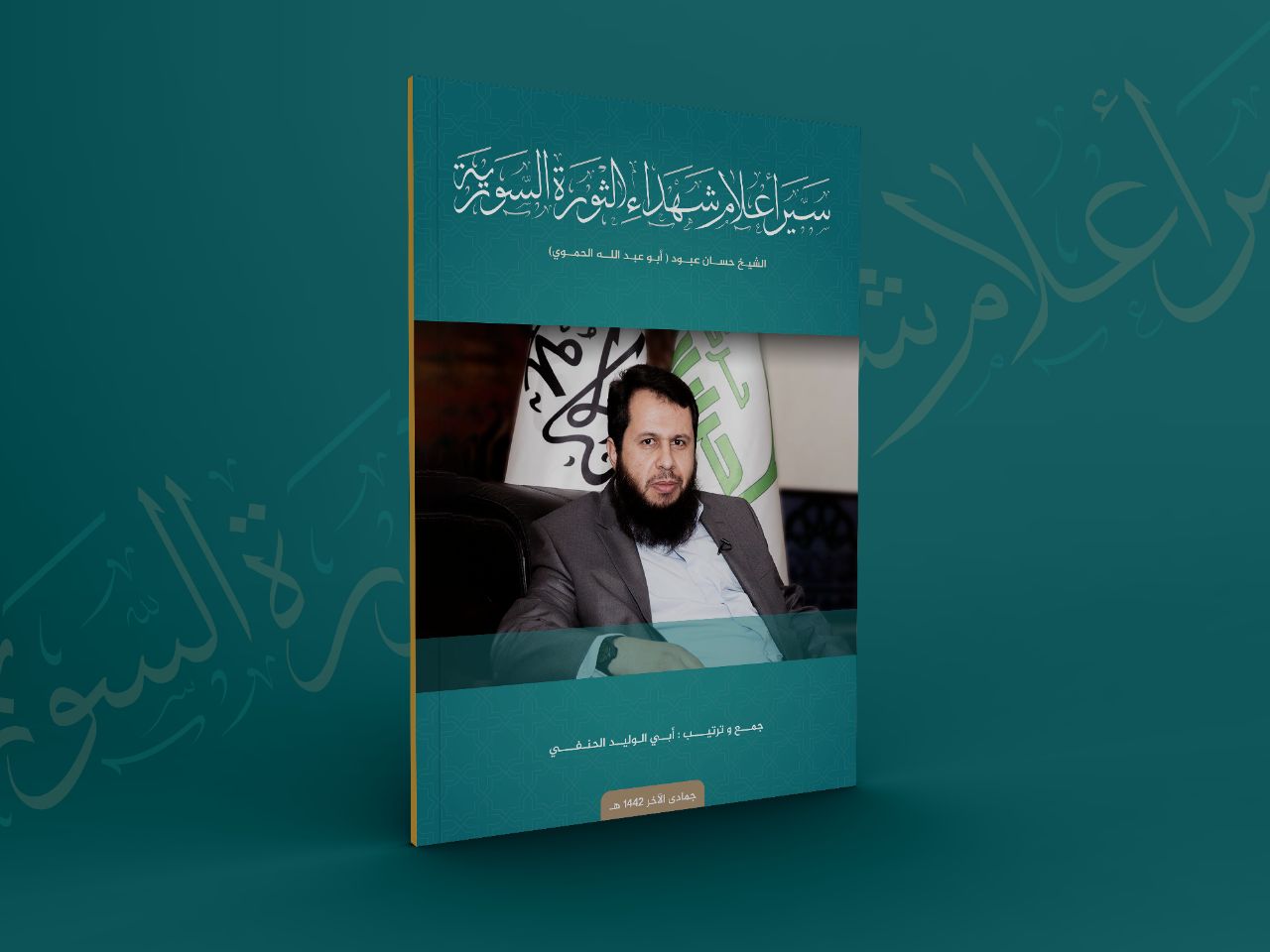For prior parts in this video series see: #2 and #1.
—

_________________
To inquire about a translation for this video message for a fee email: [email protected]
For prior parts in this video series see: #2 and #1.
—

_________________
To inquire about a translation for this video message for a fee email: [email protected]
For prior parts in this video series see: #31, #30, #29, #28, #27, #26, #25, #24, #23, #22, #21, #20, #19, #18, #17, #16, #15, #14, #13, #12, #11, #10, #9, #7, #6, #5, #4, #3, #2, and #1.
—

____________________
(33)-696-HQ.mp4
To inquire about a translation for this video message for a fee email: [email protected]

Video:
English translation:
Ḥarakat al-Shabāb al-Mujāhidīn — The Blessed Manda Bay Raid (En)
________________
The Long Jihad: The Boom–Bust Cycle behind Jihadist Durability – Aisha Ahmad, Journal of Global Security Studies: https://bit.ly/39vc87b
Sunday January 24:
The Islamic State in Mozambique – Tore Refslund Hamming, Lawfare: https://bit.ly/3otHfnX
Wednesday January 27:
The Challenge of Foreign Fighters: Repatriating and Prosecuting ISIS Detainees – Vera Mironova, Middle East Institute: https://bit.ly/2M7jHs0
Friday January 29:
Tunisians of the Iraq Jihad and How That Set the Stage for the Syrian Jihad – Aaron Y. Zelin, The ISIS Reader: https://bit.ly/2MFv6iE
Between the Hammer and the Anvil: Limits on Territoriality of Daesh Affiliates – Bohumil Doboš and Martin Riegl, Civil Wars: https://bit.ly/36Kt4EY
Nestled into the ISIS Reader: Milestone Texts of the Islamic State Movement is a brief mention of a Tunisian that went by kunya Abu Usamah al-Tunisi. Based on primary source research for my own book, Your Sons Are At Your Service: Tunisia’s Missionaries of Jihad, Abu Usamah came to Iraq at the latest in early 2004 and fought in the Battles of Fallujah where his close relationship with both Abu Mus’ab al-Zarqawi and Abu Hamzah al-Muhajir led to his rise in the organization: first as the military leader of Baghdad’s southern belt and later as the leader of Majlis Shura al-Mujahidin (MSM)/the Islamic State of Iraq’s (ISI) entire foreign fighter operation. His closeness to al-Zarqawi and al-Muhajir might also help explain why Abu Usamah appeared as one of the masked individuals in the video that showed the beheading of the American Nicholas Berg in May 2004. More importantly, the fact that Tunisians held high-level positions, especially ones related to foreign fighting, helps explain why so many Tunisians would later become connected to these networks that helped recruit people to fight in Iraq, Libya, and Syria after 2011. Abu Usamah would eventually be killed in a U.S. airstrike in the city of Musayyib, in Babil Province, on September 25, 2007, along with a number of other senior ISI leaders.
Although many Tunisians partook in jihadism prior to the Iraq war, the war inspired a new generation and cadre of individuals. For example, Hasan al-Brik, who would become Ansar al-Sharia in Tunisia’s (AST) head of dawa after the 2011 Tunisian revolution, traveled to Iraq in 2003. Like many others, he did not actually make it into Iraq, but rather took charge of a safe house in Syria where individuals were vetted before travelling to Iraq. For the Tunisians who survived, many, including al-Brik, would be arrested in Syria (and elsewhere) and rendered back to Tunisia to be placed into its prison system. Tunisia’s prisons in the seven to eight years before the revolution would be crucial for bringing together the first generation of Tunisian jihadis associated with Afghanistan and Europe-based networks and the second generation more associated with Iraq and the GSPC/AQIM networks. This prison exchange between the first and second generations of Tunisian jihadis would provide AST’s base for activities after the 2011 revolution and later the foreign fighter mobilization to Iraq, Libya, and Syria to either join Ansar al-Sharia in Libya, Jabhat al-Nusrah, or the Islamic State.
My book provides a lot of details on the Tunisians that joined the Iraq jihad, around 5,000 words in all. Due to that length and the focus of the ISIS Reader on primary sources, this post will highlight some details based strictly on research derived on this network from primary sources. However, if you want the entire picture, chapter four of my book gets into the entire history and story in full.
Click here to read the rest of this post.
—

Click the following link for a safe PDF copy: The Islamic State — al-Nabā’ Newsletter #271
_______________
Source: RocketChat
To inquire about a translation for this newsletter issue for a fee email: [email protected]

_________________
Source: Telegram
To inquire about a translation for this video message for a fee email: [email protected]
Click the following link for a safe PDF copy: Biography of the Symbolic Martyrs in the Syrian Revolution #20- Shaykh Abū ‘Abd Allah al-Ḥamawi (Ḥasan ‘Abūd)
________________
Source: Telegram
To inquire about a translation for this release for a fee email: [email protected]

A recent report by the US Treasury Department states that Al Qaeda organization retains presence in Afghanistan and is gaining strength.
We strongly reject this report. The report has been compiled by partisan and warmongering circles based on false information.
In the year 2001 when a large-scale war broke out in Afghanistan and the subsequent uprisings in parts of the Arab world, members of Al Qaeda and other foreign nationals that had previously sought refuge in Afghanistan returned back to their homelands.
Currently, there are no Al Qaeda operatives present in Afghanistan and neither does there remain a need for any foreign national to live in Afghanistan.
Unfortunately, some circles are seeking the extension of this imposed war on the Afghan nation in pursuit of their interests and malicious objectives, are thus seeking to corrupt minds and create unwarranted fears with propaganda, and are sourcing information from warmongering individuals and parties before forwarding it to other departments.
We consider the full implementation of the Doha agreement a logical solution to the ongoing problem, and also in the interest of both the American and Afghan people.
The Islamic Emirate once again declares that it shall remain committed to all clauses of the Doha agreement, not allow anyone to pose a threat to the security of the United States and its allies from the soil of Afghanistan or build bases here.
The Islamic Emirate maintains that all concerned parties must remain committed to the Doha agreement and their stated responsibilities.
Spokesman of Islamic Emirate of Afghanistan
Zabihullah Mujahid
14/06/1442 Hijri Lunar
08/11/1399 Hijri Solar 27/01/2021 Gregorian
__________________